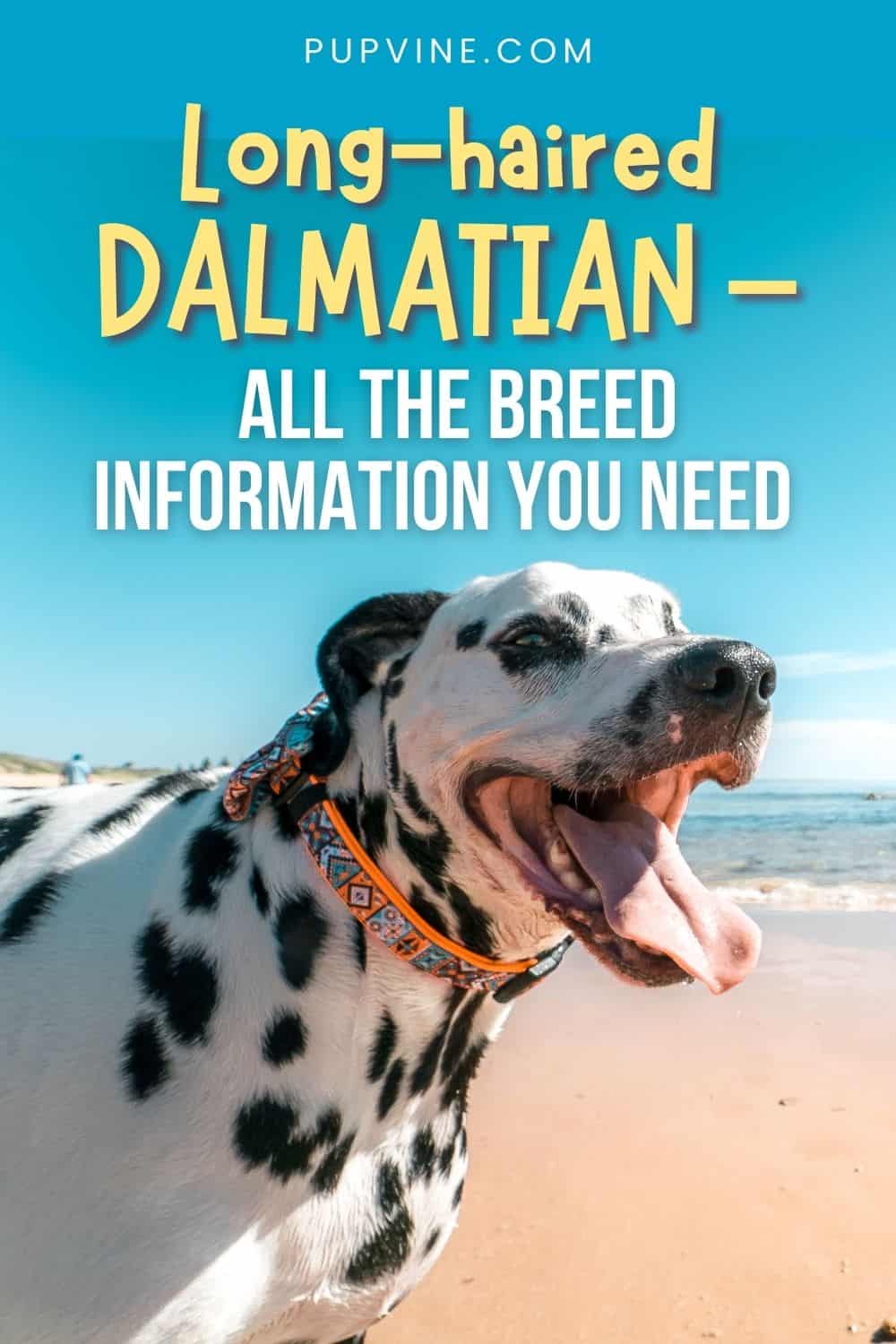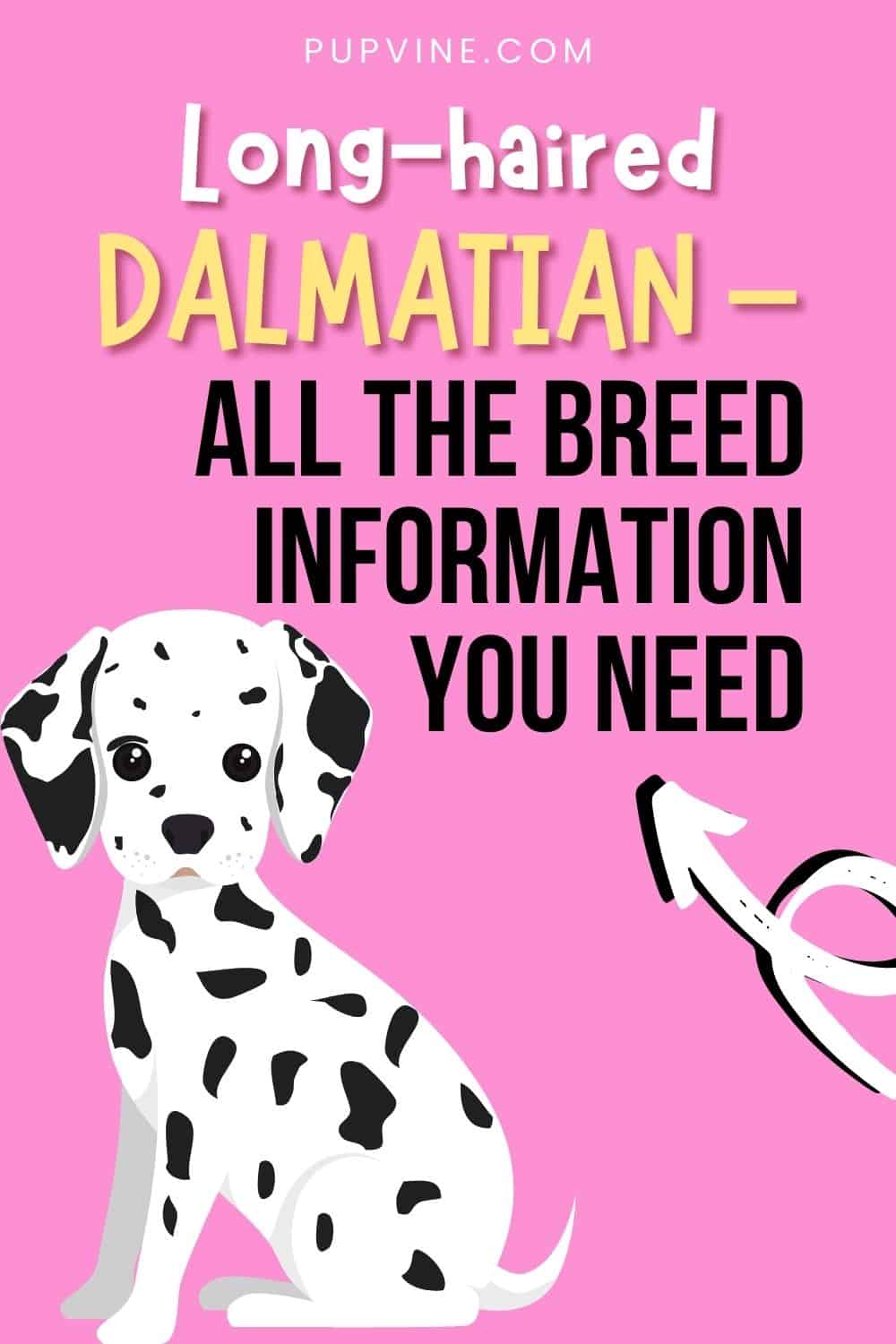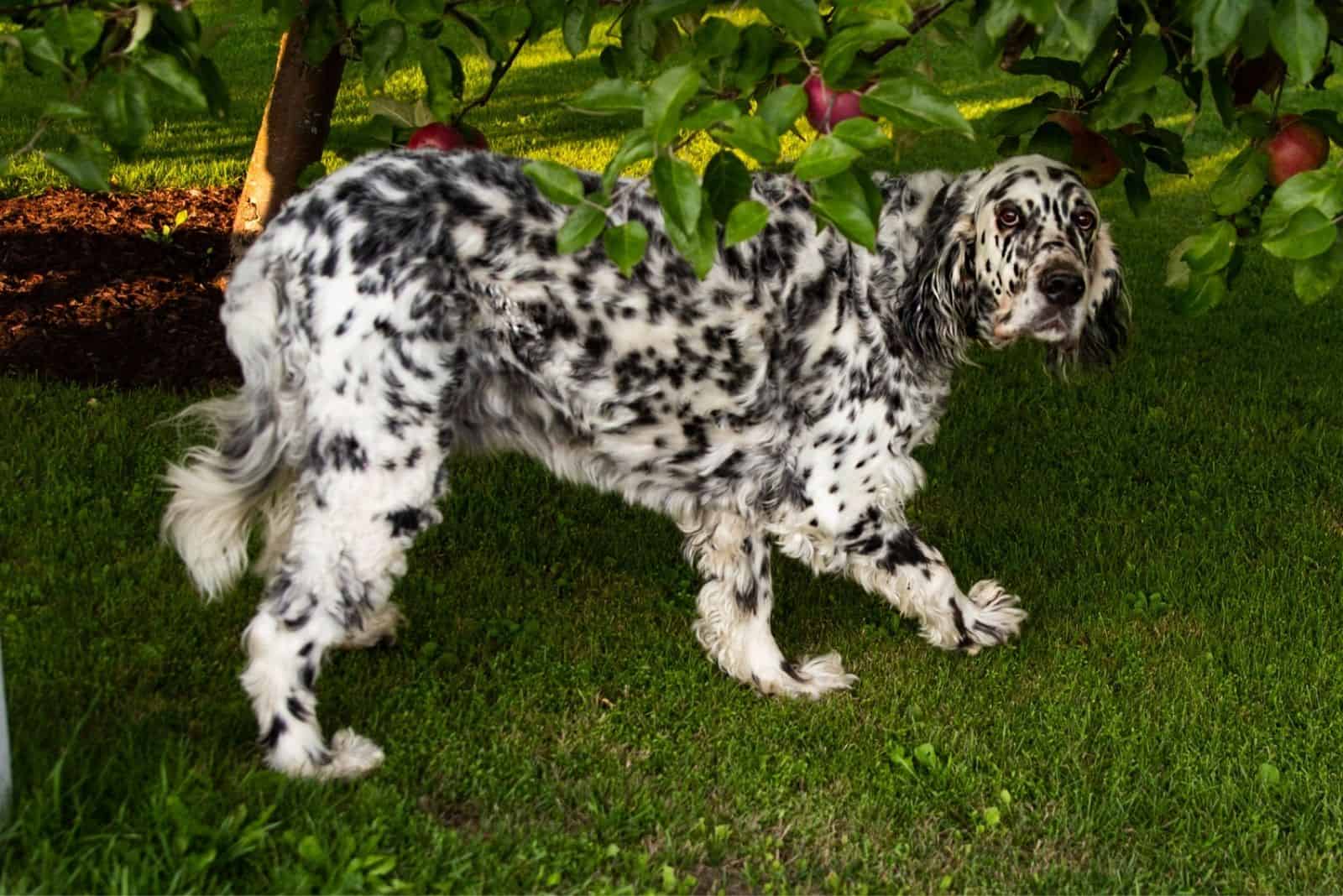The Dalmatian is one of those dog breeds that everyone is familiar with. They have earned love and recognition over the years, partly driven by various versions of Disney’s 101 Dalmatians, and also because they have become a permanent fixture as the firehouse dog in hundreds of fire stations across the USA.
They’re affectionately known as the Plum Pudding Dog, or Spotted Dick, as the spots remind people of the English festive dessert that is flecked with nuts and candied fruit peel. Other nicknames are based on the breed’s historical uses, such as English Coach Dog or English Carriage Dog.
Speaking of history, it’s a subject of debate as to where they originated, but the general consensus seems to support that they come from the regions of Dalmatia and Croatia.
They had a variety of uses, such as guard dogs for carriages and coaches traveling the remote countryside roads, and as retrievers on hunting trips.
From there, they made their way to Britain before heading across the pond to the USA, where they became established, reprising their carriage dog roles by accompanying fire engines.
So we think we know these black-spotted dogs pretty well: a graceful and sleek, medium-sized dog with a muscular and well-defined body.
They have a long tail with a slight upward curve. They have naturally floppy ears, giving them an endearing, almost comical look. We almost always imagine them with their classic black and white coat. And, it’s always a dense, short coat, isn’t it?
No, not always! Some Dalmatians have a long coat. However, they are pretty rare. In 2014, there were thought to have been fewer than 100 in the entire world. In fact, it’s suggested that fewer than 100 had ever existed up to that point!
If you’ve never come across this before and are curious to know more, then read on. We’ve compiled a guide to this unique dog that pulls together all the information you might need if you want to get one for yourself.
Long-Haired Dalmatian AKC
The American Kennel Club (AKC) is a good place to start our quest. Kennel clubs regulate the breed standards for purebred dogs. These organizations exist to promote breed welfare, record pedigrees, and ensure that show dogs conform to the set standards.
So, what do they have to say about the Long Haired Dalmatian?
Well, not much, as it happens.
Organizations such as the AKC are notoriously strict when it comes to setting breed standards. According to the AKC, The Dalmatian’s coat is short, dense, fine, and close-fitting. It is neither woolly nor silky. It is sleek, glossy, and healthy in appearance.
It doesn’t leave much room for doubt, does it? Even though the long-haired version has been proved to be purebred, it is seen by these organizations as the product of a faulty gene. A long coat means instant disqualification from the show ring!
The whole subject of long coat Dals is a tragic and controversial one. It’s believed that the Dalmatian breed used to be split 50:50 between short and long coat types. The long coat (as it was seen as a fault in the breed) was bred out over time.
Some Dalmatian enthusiasts have been overzealous in their actions, believing that they are protecting the purity of the breed by stamping out any signs of this faulty gene.
There are rumors of bullying and slander, with some breeders having to take drastic action to hide their pups. Some were even put out of business permanently.
There are tales of long-haired pups being dumped, taken to rescue centers, or even euthanized to ensure that this ‘mistake‘ didn’t go further.
Though they are still rare, the tide has slowly begun to turn. More people are starting to discover these unique dogs. Breeders can (mostly) operate without fear of reprisals if they choose to include Long Coat Dalmatians in their breeding programs.
Even though the AKC still hasn’t accepted the long coat, they have relaxed the rules on entering these dogs into agility, dock diving, and obedience competitions, but not conformation shows.
Did your long-haired Dalmatian whisper to you he needs some quality dog products? Oh, yeah? Well, what are you waiting for! Let’s go shopping!
[ninja_tables id=”15905″]
Are Long Coat Dalmatians Mixed?
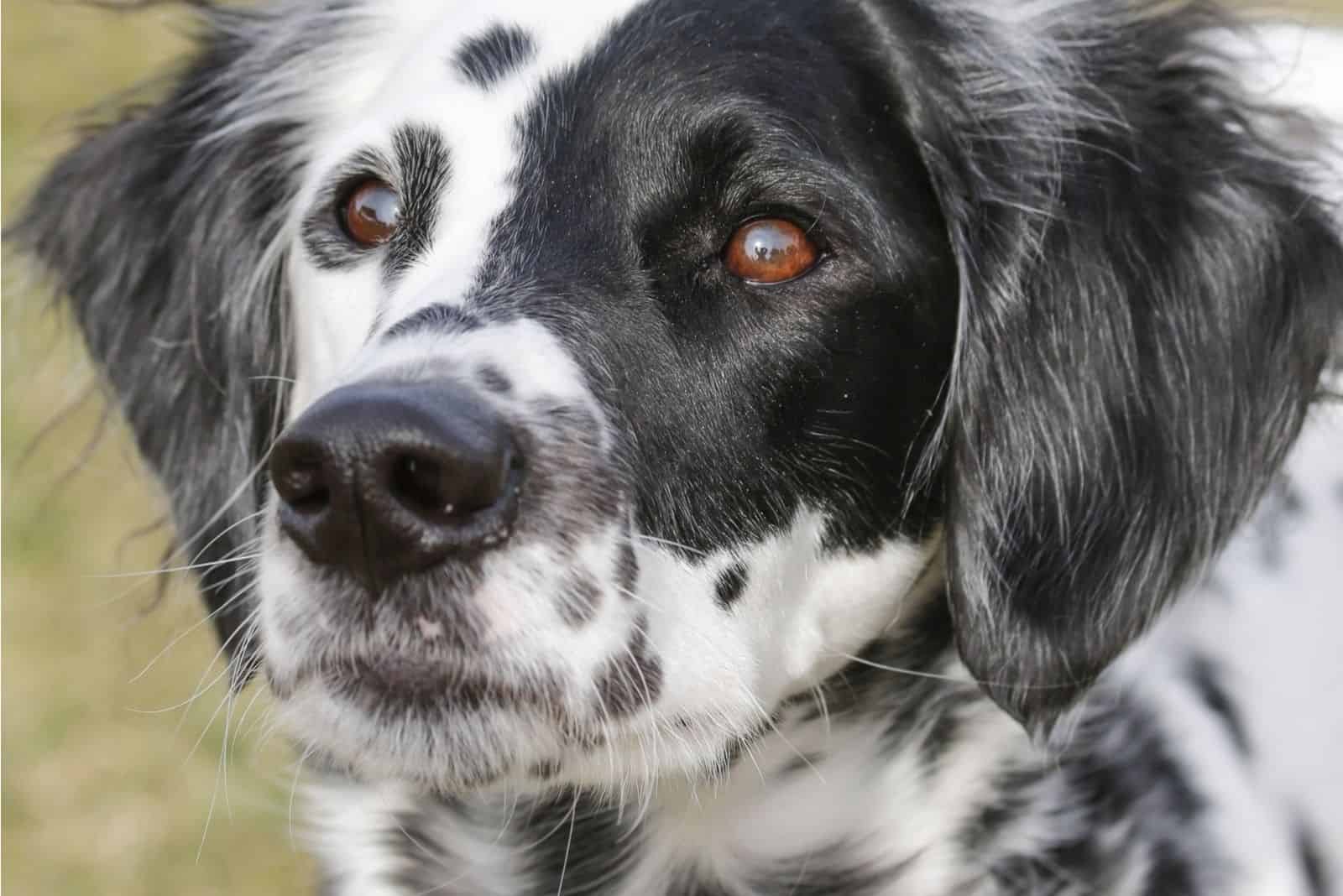
As we touched on earlier, Dalmatians with long coats (sometimes called LC Dalmatians) are purebred. This means that they are not mixed breeds or hybrids.
The long, silky hair comes from a recessive gene, meaning that it is usually masked by a dominant gene. When two dogs with the recessive gene mate, there is a possibility that pups may have a long coat.
Even so, some breeders may try to cash in on the popularity of certain breeds or traits that have become fashionable and popular.
They might produce hybrids with long hair by crossing a Dalmatian with a Collie, for example. However, it wouldn’t take much to expose the truth and identify these dogs as being mixed breeds.
Another mix they might try to sell as a long-coat Dalmatian is a Dalmatian Golden Retriever mix, but the color of this crossbreed might be telling.
We will return to the subject of Dalmatian breeders later on as it is vital to choose a reputable one.
Despite the fact that these long-haired beauties are purebred, they aren’t accepted by kennel clubs worldwide.
The reasons behind this aren’t exactly clear, especially as this long coat was once a familiar sight and is a naturally occurring gene variation. It has been bred out over successive generations until it has almost disappeared.
What makes it even more puzzling is that Dals with long coats are welcome to join in agility competitions, and they can even be registered with certain Kennel Clubs. It’s just that when it comes to the breed standards, they are disqualified from entering shows!
Do Long-Haired Dalmatians Shed?
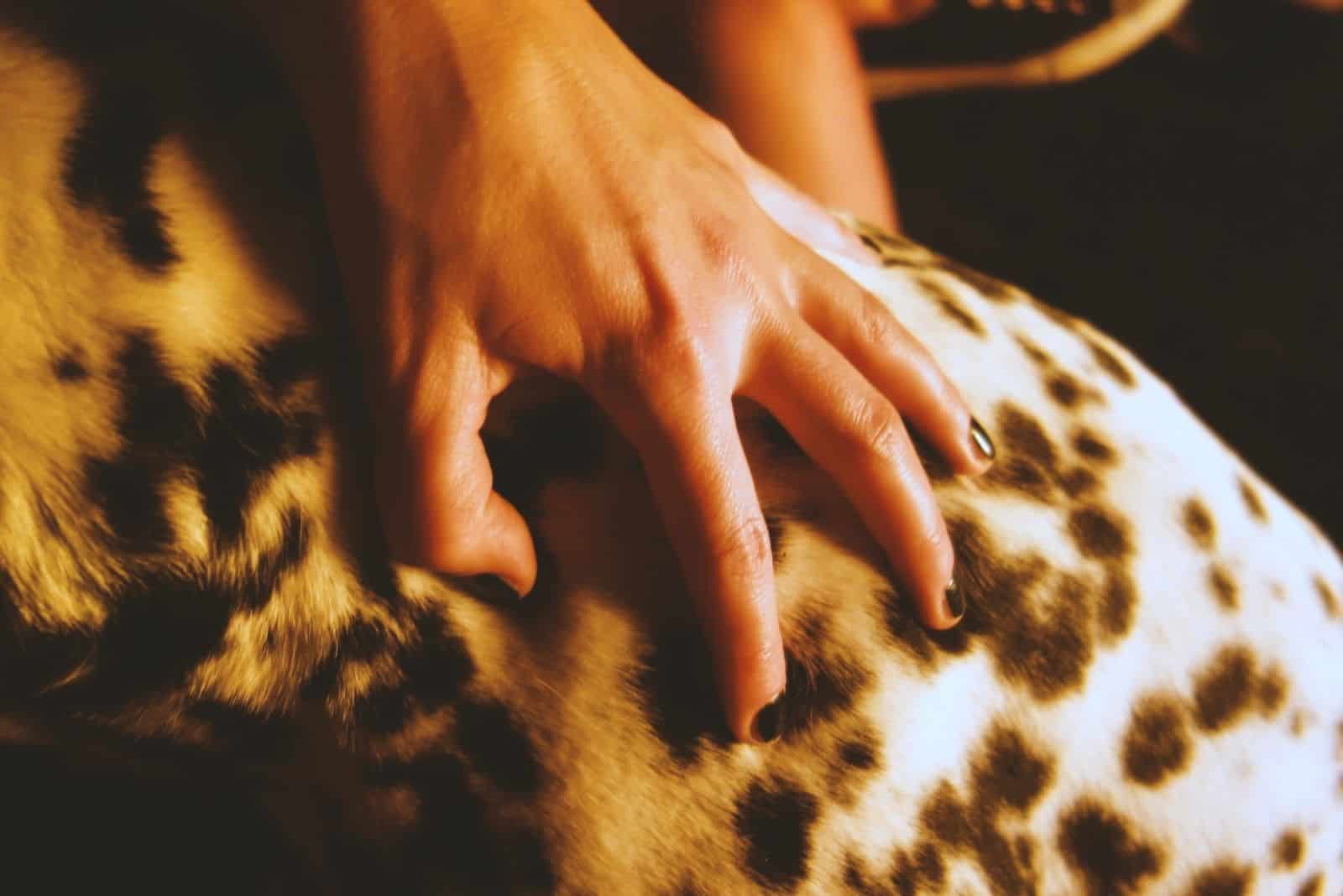
Yes, they do. All Dalmatians shed all year round, and these ones are no different.
However, because the hair is very silky and soft to the touch, it tends not to stick to fabric, so it won’t cling to your clothes and soft furnishings. It’s also pretty easy to sweep or vacuum up from carpets or laminate floors.
To keep it under control, it’s a good idea to brush your dog every other week. Another way to limit hair loss is to feed them good-quality dog food as this keeps their skin and coat healthy.
Just to give you an idea of what is meant by ‘long hair’, this silky fur will grow between 2 and 4 inches from the body, so it’s not excessively long, but it is very different from the short hairs on the ‘normal’ Dal.
They also have feathering on the ears, legs, and tail, which can grow up to several inches in length as they get older.
Are Long Coat Dalmatians Hypoallergenic?
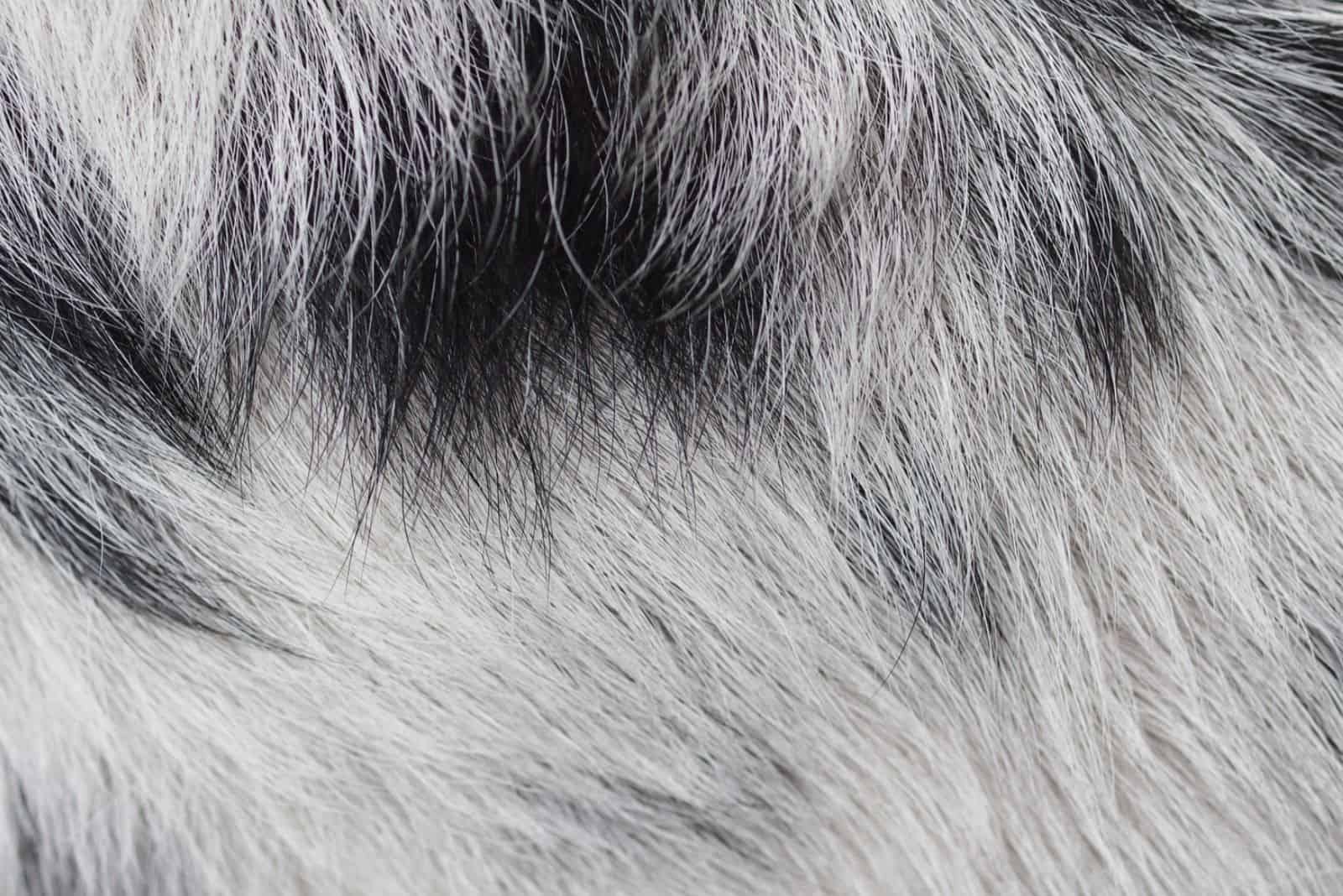
This question is linked to the previous one in that shedding is often associated with pet allergies. The answer is, no, they are not hypoallergenic.
However, this doesn’t necessarily rule them out as an option for allergy sufferers. Pet allergies are triggered by proteins in the dog’s saliva and dander (dry flakes of skin) that become attached to dog hair; not by the hairs themselves.
Famously hypoallergenic breeds such as the Poodle don’t produce much dander, and they have a single coat that doesn’t shed very much. Any loose hair is trapped within the curly coat, allowing it to be brushed out rather than fall out around the home.
Also, the word hypoallergenic simply means that you are less likely to have an allergic reaction. There are no guarantees! Different breeds produce different allergens, so while you might be allergic to one breed, you won’t necessarily be allergic to another.
Long-Haired Dalmatian Temperament
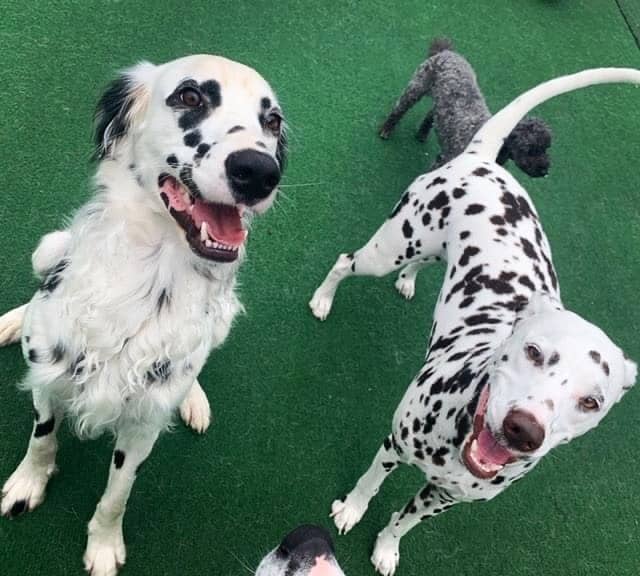
Photo from @ruby_themkedalmatian
These dogs are known for their playful, friendly, affectionate nature, and for their loyalty. They make great family pets for the right family.
They are active and outgoing, and will suit a family that loves long walks and hikes in the woods and hills. They’re built for stamina, and they will trek for miles without complaining.
They require training and socialization in order to get the very best out of them, but if you’re willing to invest in this, then you’ll have a friend for life. They will protect you and your home, and they make excellent watchdogs.
Dalmatians can be wary of strangers, and they might display aggression towards other dogs, which is why socialization at an early age is so important. We’ll go into this in more detail further along in the section entitled, Long Haired Dalmatian Breeders.
These are energetic dogs that can be a bit Tigger-like. They’re very bouncy! This can be a bit too much for smaller kids who could get bounced out of the way if they’re not careful. Other than this caveat, these spotted dogs are great with kids, and will usually be pretty patient.
As always, though, it is wise to supervise any dog when children are around.
Long-Haired Dalmatian Price
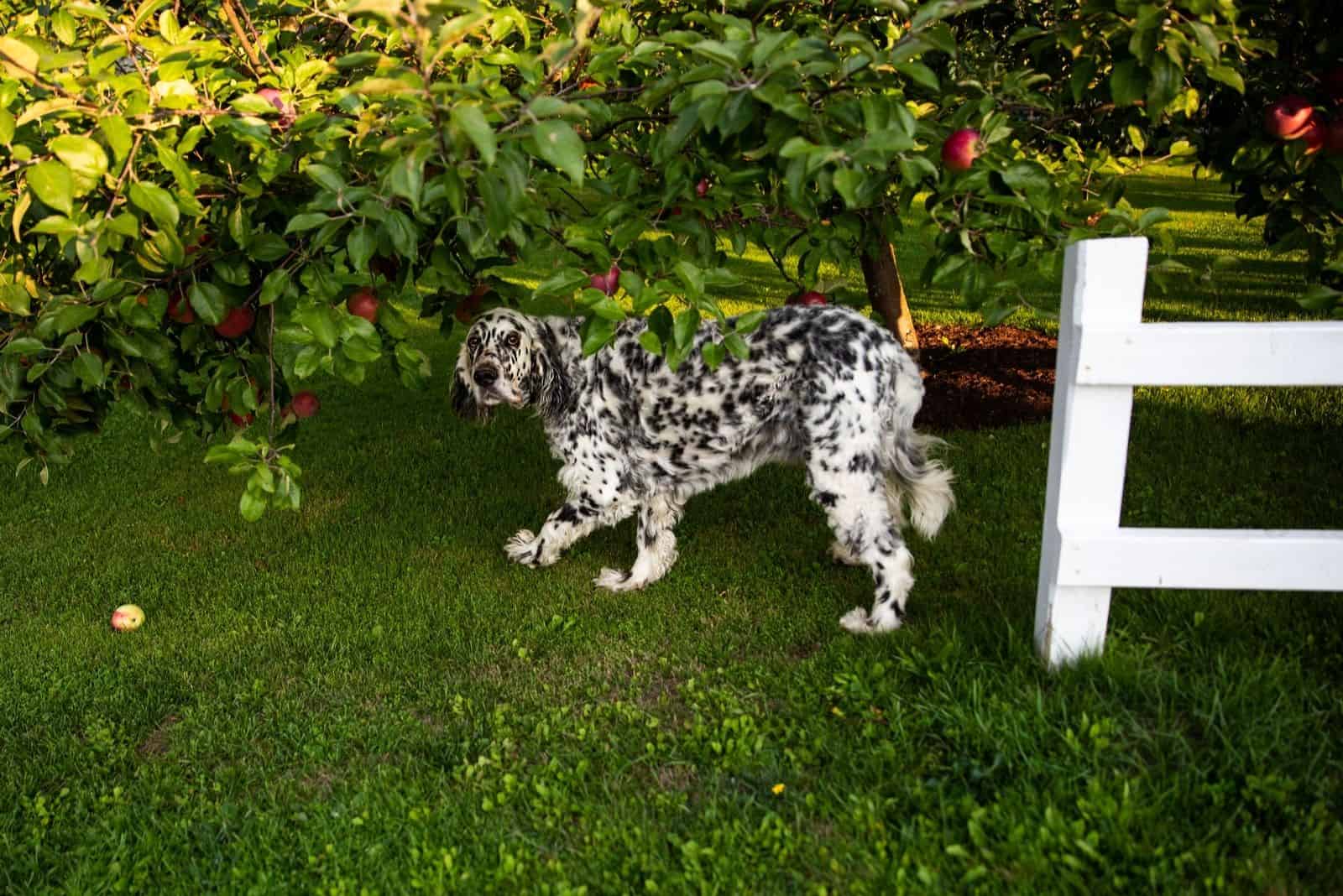
You’re looking at between $800 and $1,200 for one of these furry companions. The price will depend on your location, the supply and demand in your local area, and the reputation of the breeder.
While that might seem a little steep, bear in mind that breeding is an expensive process. In fact, there’s a good chance that established and respected breeders will be incurring a loss on many of the litters they produce.
For example, DNA testing alone can cost around $1,000 per litter. This is before you add in things like vaccinations, food, kennels, whelping equipment, stud fees, and a whole raft of other overhead costs!
Lemon Long-Haired Dalmatian
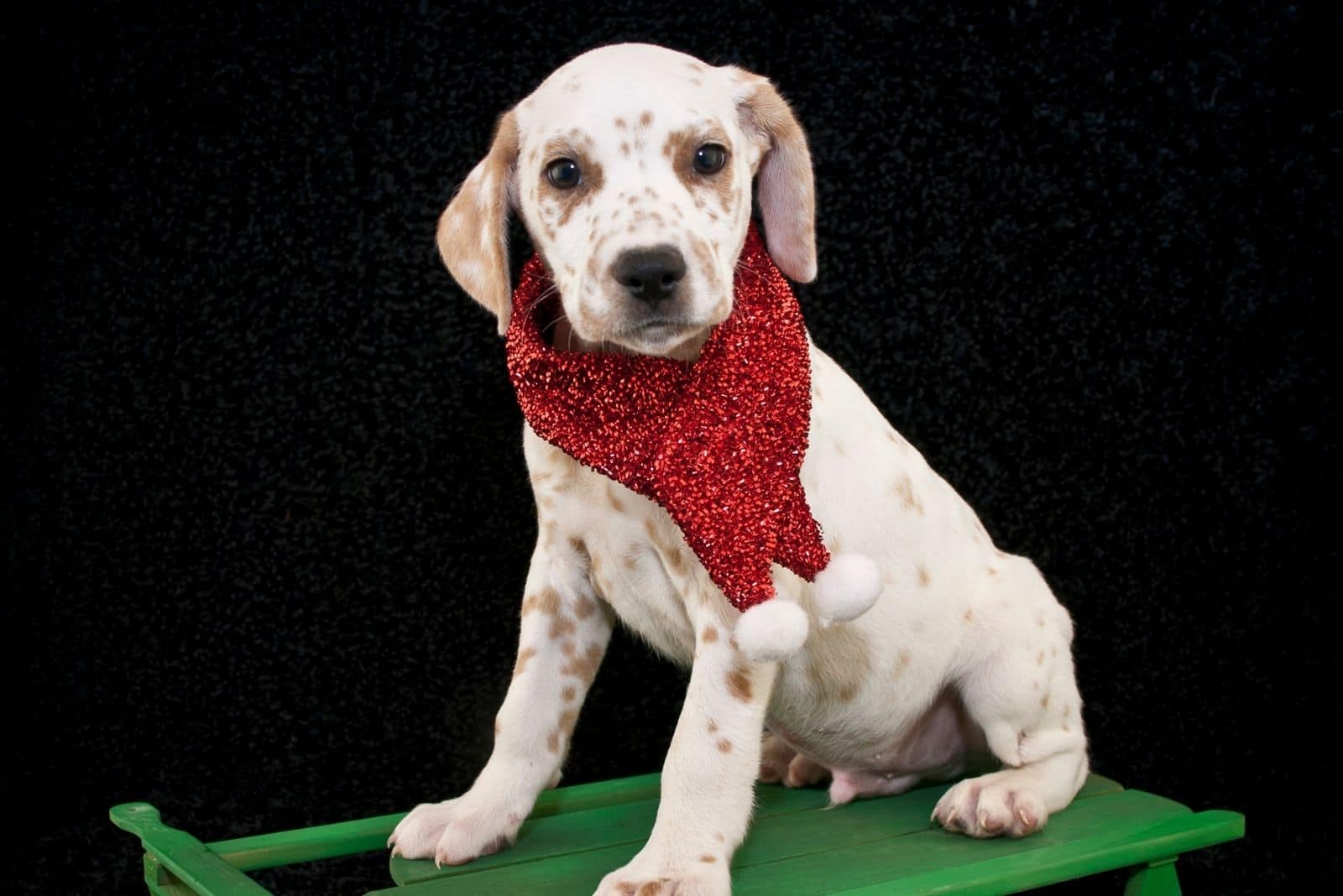
If you thought that a Dalmatian with a long coat was unusual, wait until you see the lemon version! As with other dog colors, the name isn’t a true reflection of what you see.
Lemon conjures images of a white dog with bright yellow spots, which would be cool, though perhaps a little weird.
In fact, they’re more of a light brown or pale orange color, but beautiful nonetheless.
Once again, this is seen as an undesirable genetic mutation by most kennel clubs, which disqualifies any Lemon Dals from the show ring. However, they are allowed to compete in agility competitions.
Oddly enough, although lemon is not accepted under the breed standards, liver-colored (dark brown) spots are! Very occasionally, you may get tricolor Dalmatians, with tan spots around the head, chest, neck, legs, or tail. This also means instant disqualification.
Long-Haired Dalmatian Puppy
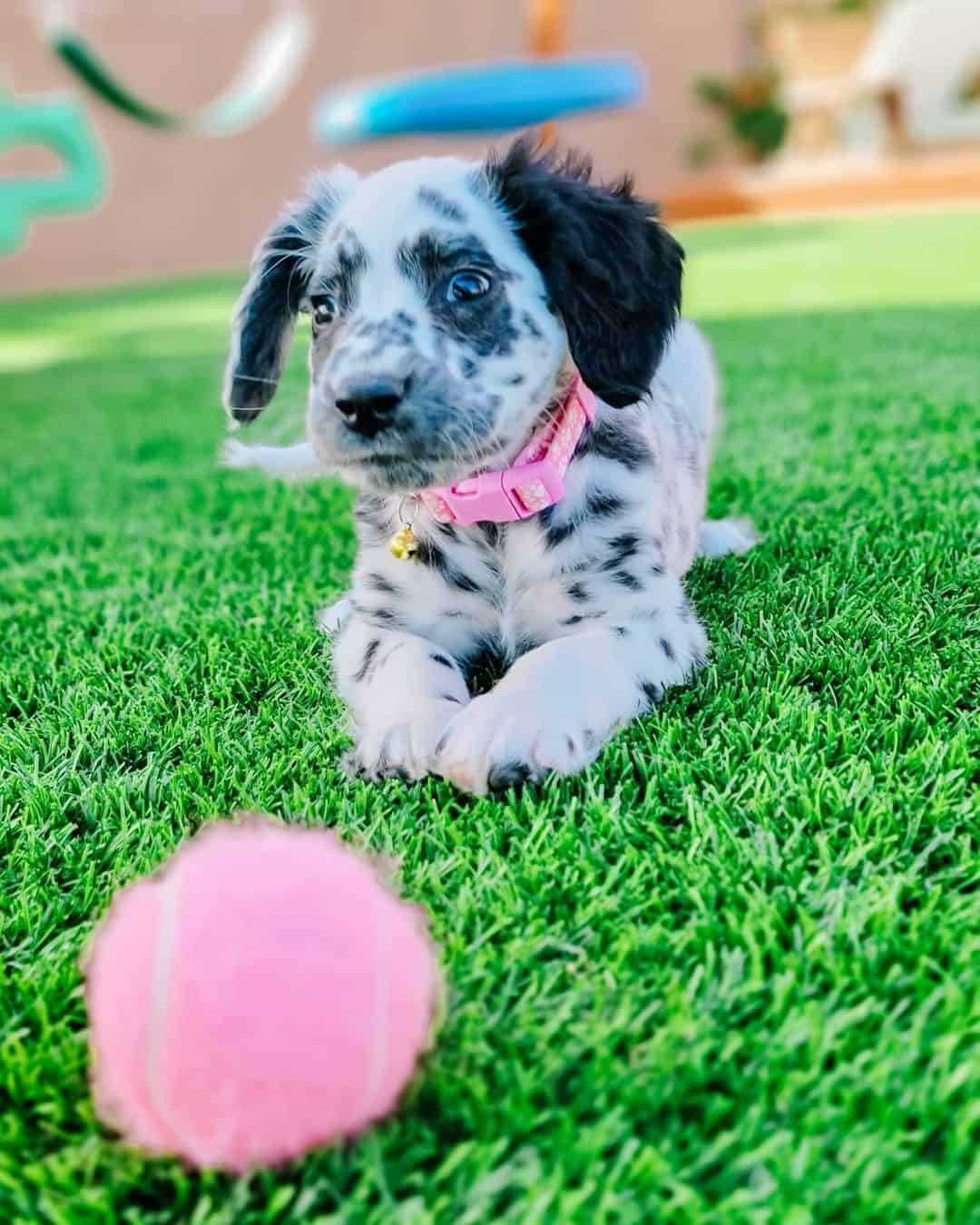
Photo from @lucylongcoat
Puppies of all breeds are amazingly cute. But, you already knew that.
Long Haired Dalmatian pups are no exception, with all the appeal of the ‘normal’ Dal but with a long, silky coat. It’s easy to see why people fall in love with them!
Before rushing out and getting one, it’s vital that you accept this truth: Dalmatian puppies need a lot of work in the early stages to avoid problems later. All breeds are different, each with its own challenges and traits.
It’s no good expecting a Dalmatian to act like another dog breed. It isn’t a Golden Retriever, so if that’s the kind of dog you want, then you should get one of those instead!
However, if it’s the long hair Dal you’re after, then communicate with the breeder. A good breeder will stay in touch with you after you take the pup home.
They’ll offer advice and support through the trials of training and socialization. These processes are essential in order to successfully shape your pup’s character.
If you put the effort in early on, then your puppy will turn out fine.
If not, then you may get an anxious, destructive, and aggressive dog.
Miniature Long-Haired Dalmatian
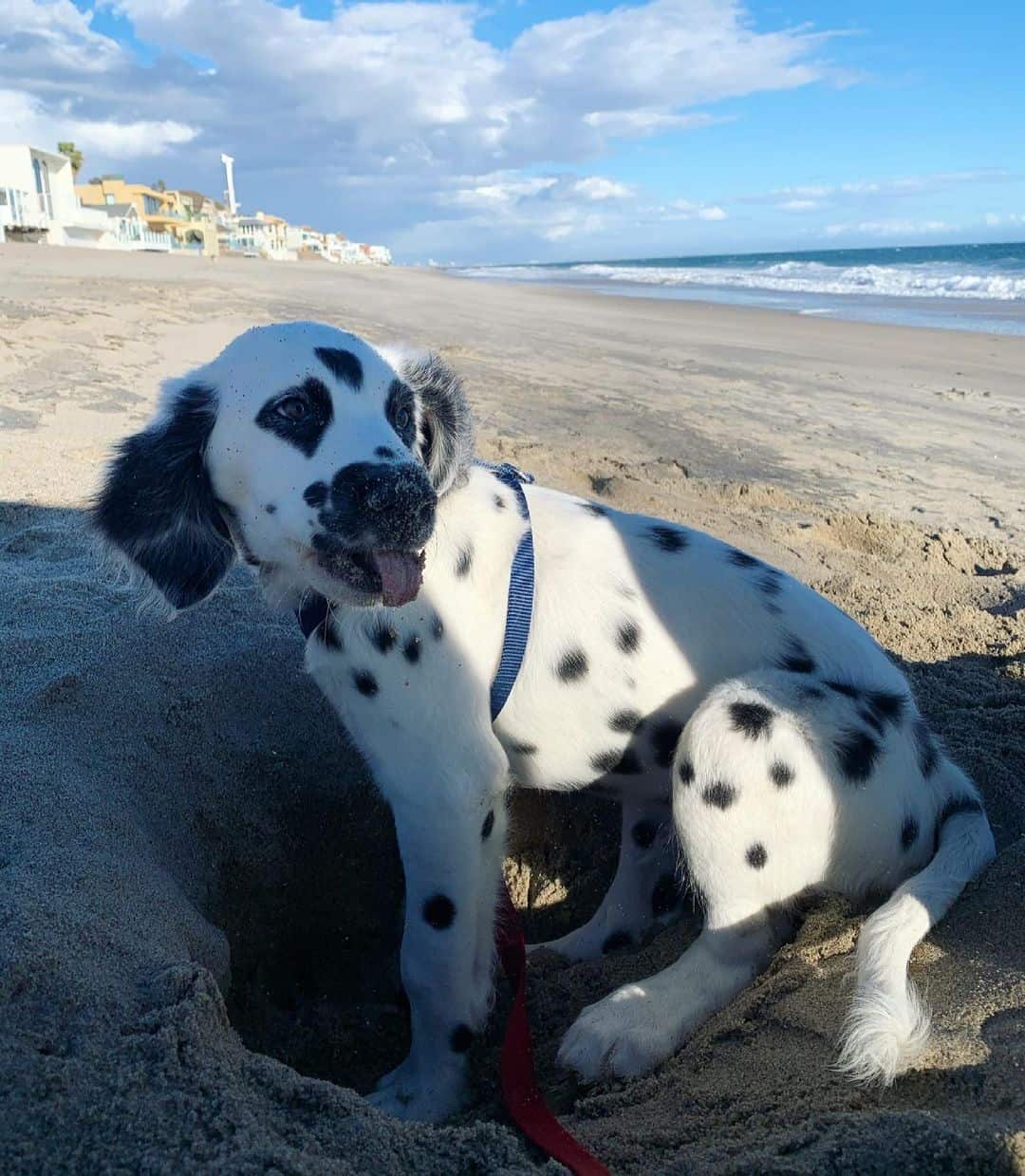
Photo from @levispottings
Small dogs have a lot going for them. To begin with, if you don’t have much space at home, then a full-sized Dal might be a problem. A big dog will also eat significantly more, adding to your grocery bill that seems to be growing by the week anyway.
So, why not get a mini-version of the Long-Haired Dalmatian?
Before going ahead, here are a few things to consider:
• Some breeders produce miniature dogs by crossing a purebred dog with a smaller breed, creating a mixed breed ‘designer dog’. While this can be a good thing, as it introduces a wider gene pool, it is more difficult to predict certain traits in the hybrid.
• Unethical breeders use the runts of the litter to create miniature dogs. This leads to sickly animals that have a lifetime of health problems – if they survive that long.
• Other breeders introduce the dwarfism gene to create miniature dogs. This also runs the risk of increased health problems.
• There are a few breeders who actually starve the pups of essential nutrients in order to keep them small and underdeveloped. This is perhaps the most despicable of all methods. It goes without saying that these breeders should be avoided at all costs.
If you really want a miniature Long-Haired Dalmatian, visit the breeder and discuss it with them. You’ll soon get a feel of how ethical and responsible they are, and they will be able to guide you in your quest.
What Is The Lifespan Of A Dalmatian?
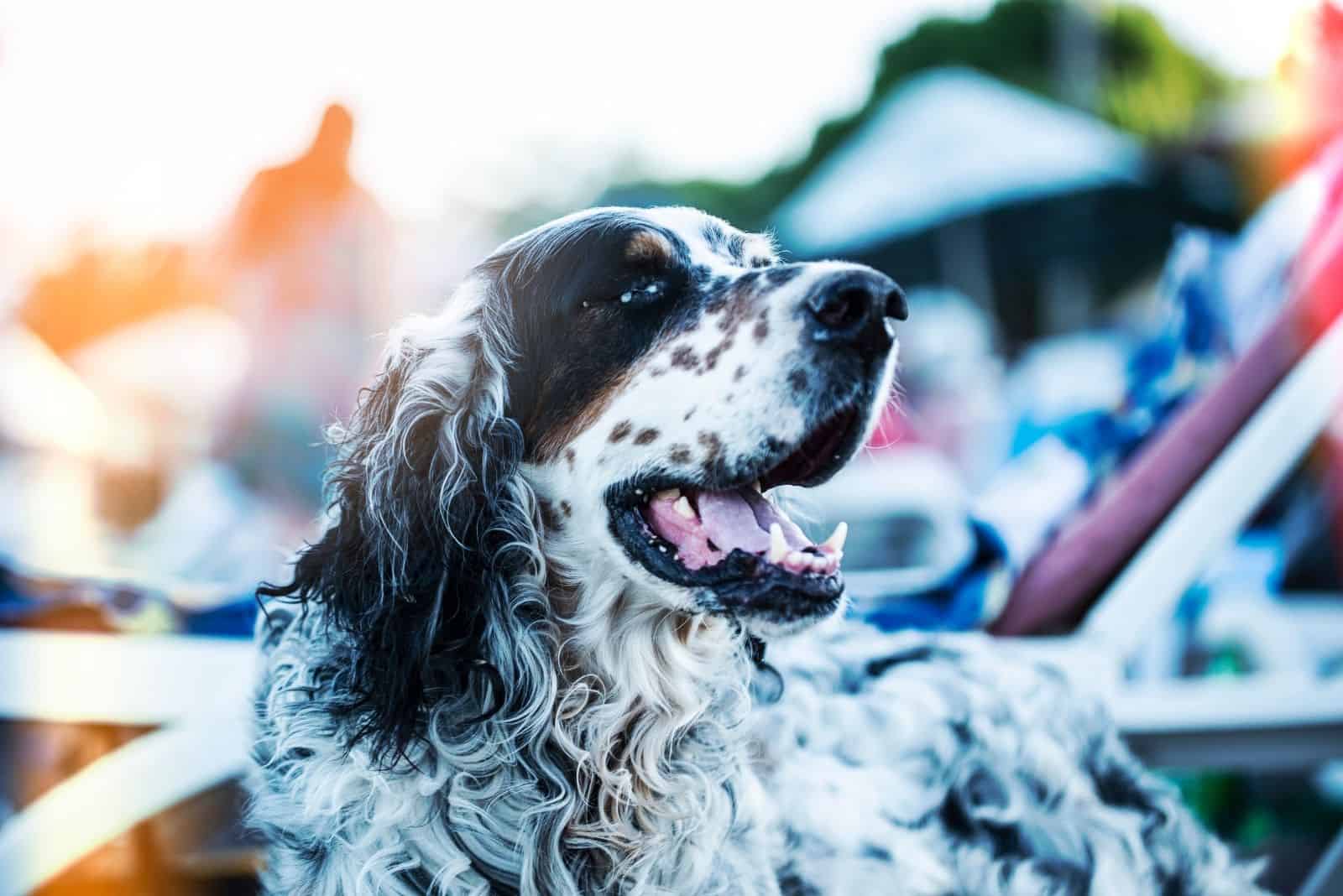
The average Dalmatian lifespan is between twelve and fourteen years. This is slightly above the average for all dog breeds, and pretty good for a larger dog.
As a general rule, the bigger the dog, the shorter its life expectancy is. This is thought to be because they need to grow so quickly, which makes them age faster.
There is very little data on Dalmatians with long coats in general, and certainly not enough to suggest that their lifespan is any different from their short-haired counterparts.
As with all dog breeds, they are prone to particular health issues, but with the right care, they should live long and healthy lives.
Dalmatian Health Problems
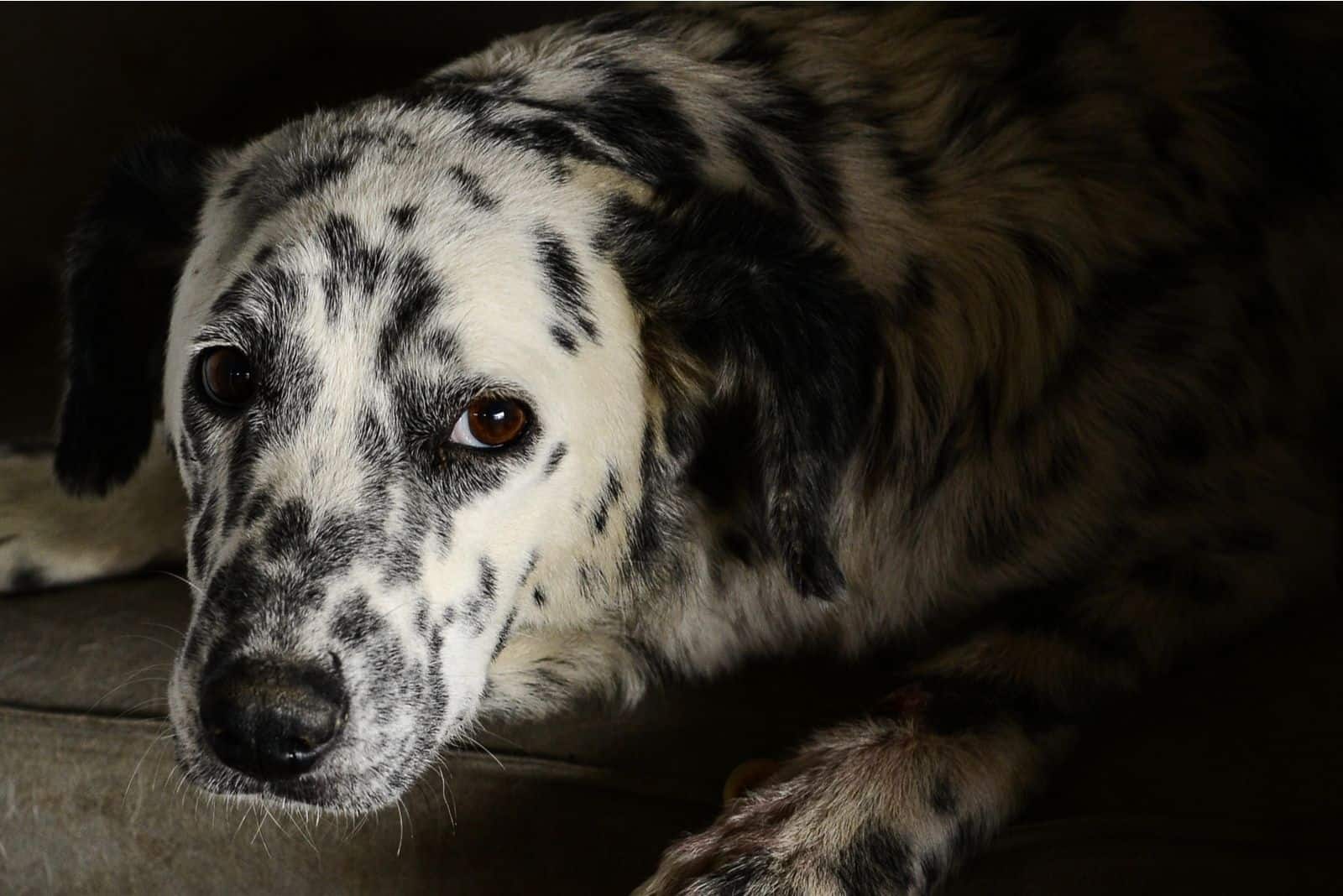
Bladder Stones
They’re a relatively healthy breed, with few major issues. However, one problem that has plagued them in the past is bladder stones.
These stones form due to the high levels of uric acid present in their bodies because they are unable to process purines (organic compounds in food). High uric acid levels can lead to gout, bladder stones, and kidney stones.
One way to combat this is through diet and by ensuring that your dog always has access to fresh, clean water.
Some breeders have begun to use dogs with two LUA genes, meaning that their pups will have normal levels of uric acid and be less prone to these health problems.
Dalmatian Deafness
Deafness is another health issue that is common in these spotted dogs. Up to 30% of all Dalmatian puppies are believed to be born deaf in at least one or both ears.
This problem is connected to the gene that creates the distinctive white coat with black spots. Any dog that carries this gene can be born deaf. However, if their hearing is okay at birth, then the gene won’t affect them later in life.
Responsible breeders use BAER (Brainstem Auditory Evoked Response) testing on their dogs before breeding. This helps to eliminate deafness from future litters.
Hip Dysplasia
A common problem in many breeds, especially larger dogs, hip dysplasia is a painful condition caused by a poorly-formed hip joint. Basically, the bones in the joints grind together as the dog moves, making it difficult to walk or run.
The joint becomes inflamed, leading to arthritis. Depending on the severity of the problem, a vet may recommend surgery, replacing the entire joint with a steel and plastic one that works smoothly and painlessly.
Epilepsy
There are several causes of epilepsy in dogs, including trauma, organ failure, and poisoning. However, the main cause isn’t fully understood. This is known as idiopathic epilepsy, and it is managed through the use of drugs.
Atopy
Many dogs have allergies of their own, with the main culprits being food, pollen, and dust mites. Dogs usually react differently than humans. We might have a sneezing fit when we come into contact with pollen, whereas dogs will develop dry, itchy skin, which then causes dander that can affect us!
The best way to increase the chances of having a healthy dog is to only approach reputable breeders. They will have health testing procedures in place, and will be only too happy to discuss any questions or concerns you may have.
You can usually tell a good breeder: the biggest problem you’ll have is getting them to stop talking about their chosen breed!
And, that’s a good thing. They have the welfare of each dog in mind, and they aren’t in it to make money. Nine times out of ten, reputable and responsible breeders will channel any profit back into improving their breeding programs.
However, many incur big losses on some of their litters.
This leads us nicely to the next section.
Long-Haired Dalmatian Breeders
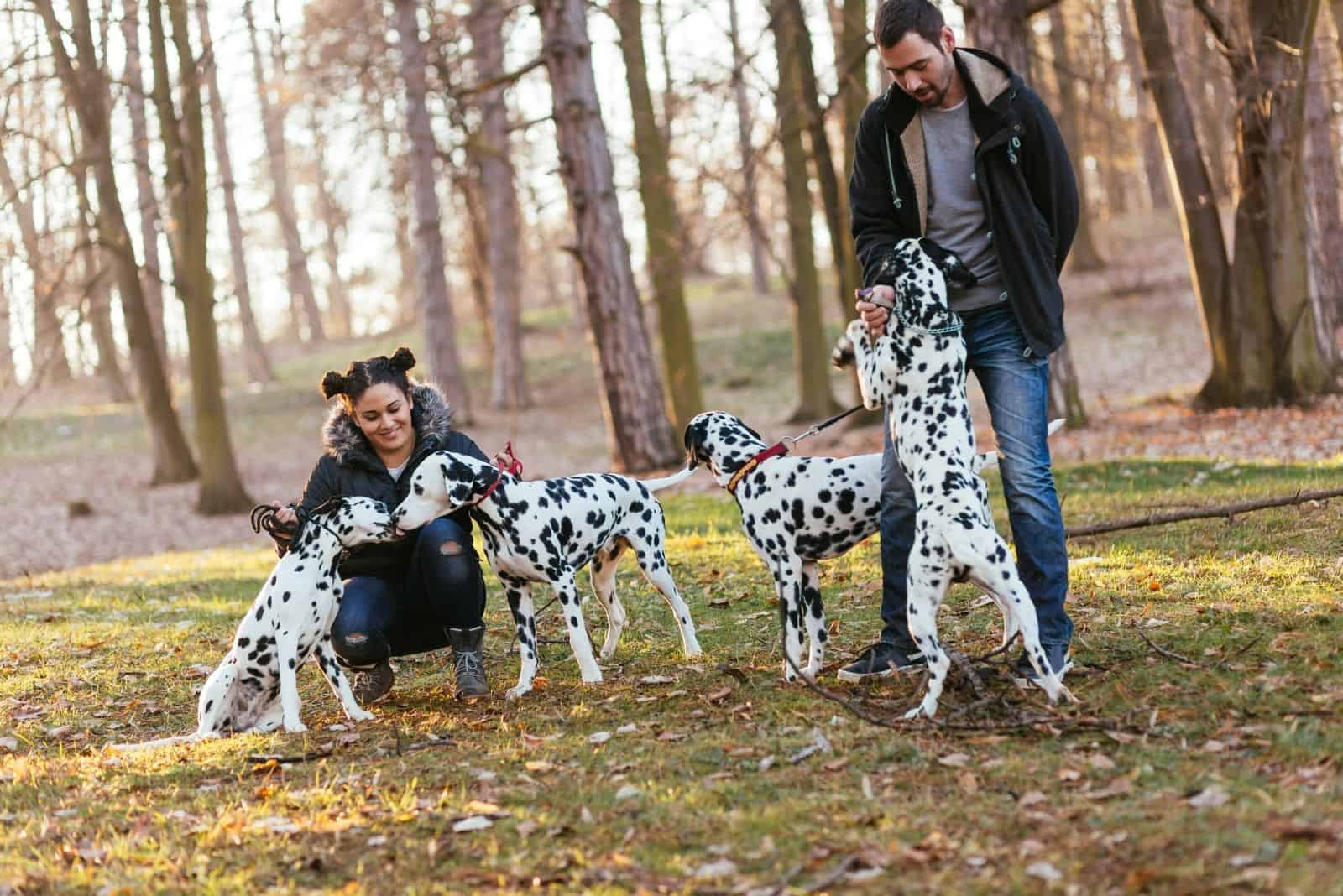
As you may have gathered already, not all breeders are the same. There are many good ones, but there are those who are out to make a quick buck.
The poor Dalmatian dog has fallen victim to these at various times over the past five decades or so when this breed was thrust into the limelight. Disney’s 101 Dalmatians made them the ‘must-have‘ dog each time a new movie was released.
Although some sources deny this, the facts speak clearly for themselves: rescue centers and dog shelters were overwhelmed with young adult Dalmatians in the year or two following each movie release.
Part of the problem was back yard breeders and puppy mills saw a chance to make money. They used poor breeding practices and unhealthy or unsuitable stock.
This led to a whole host of health and behavior problems, some of which still affect the breed today. To add to the problem, people who bought from these breeders (or places claiming to be breeders) soon discovered that their cute puppy was a bit of a handful as it started to grow.
This was usually when they decided to dump them or leave them at shelters. Deafness caused even more difficulties as people weren’t always aware of the issue.
Dogs with hearing problems were often startled by the owners or their families because they wouldn’t hear them. When the poor dog reacted badly, they were written off as being too aggressive.
Some owners didn’t help the situation as they did not take the time to invest in obedience training and socialization.
Even to this day, some people consider the Dalmatian to be a difficult dog because of this. However, the truth is that a well-trained, properly socialized Dalmatian that comes from a reputable breeder makes an exceptional companion dog for the right person or family.
It just reinforces the point that it is essential to use respected, established, and reputable breeders. Before you buy yours, do your homework!
Check reviews and testimonials. Speak to the breeders and visit the site if possible. As we mentioned, good breeders love nothing more than to talk about their chosen breed (or breeds), and will happily tell you about their work.
They have no secrets, and they will be willing to answer all your questions.
Summing Up The Long Coat Dalmatian
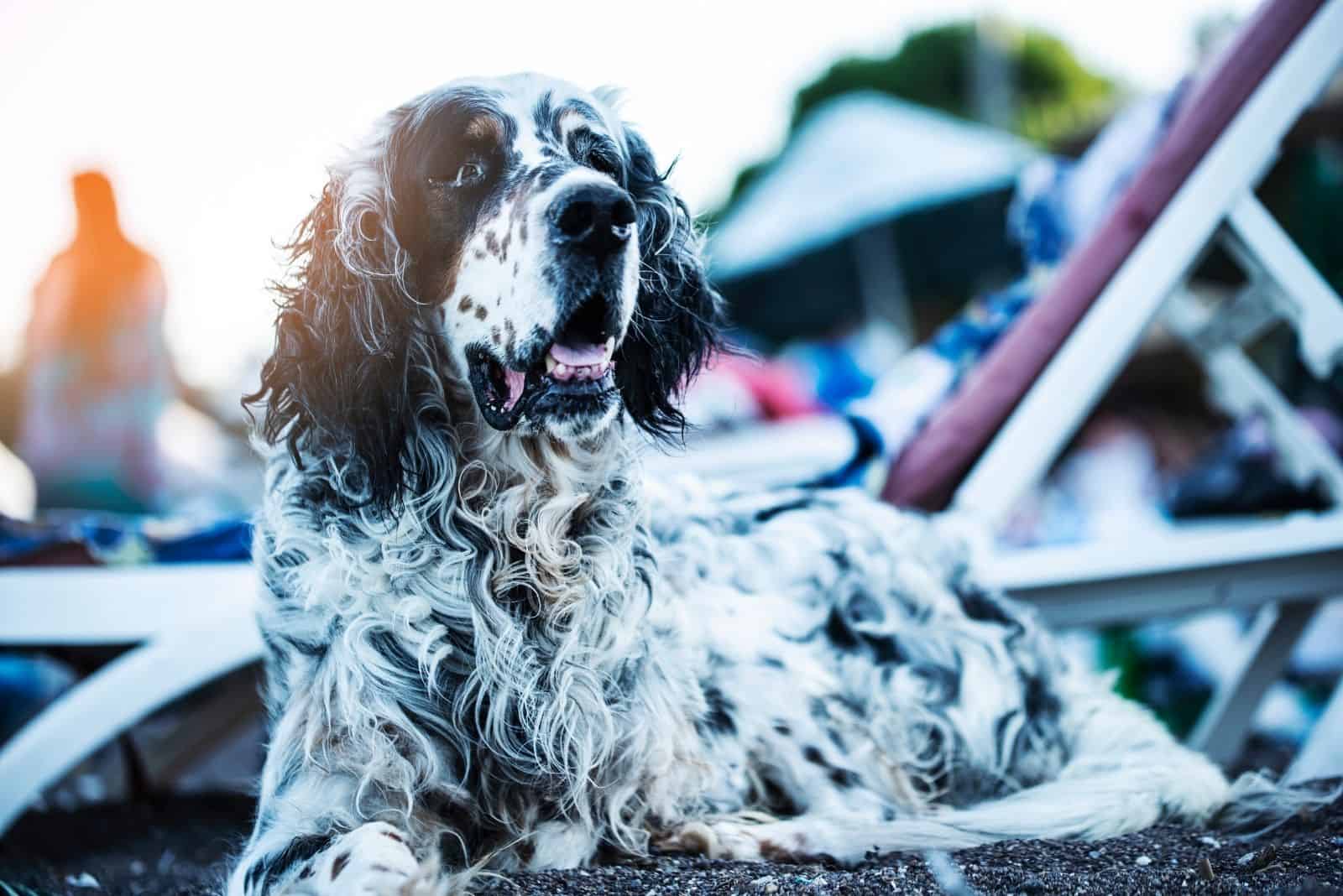
Putting it simply, it’s just a Dalmatian with a long coat! It has the same friendly and affectionate nature. It’s basically a big puppy that wants to play all the time but always has your back.
Contrary to what some people think, it isn’t a genetic mistake. It’s a beautiful dog that makes a great companion. As a breed, it has had bad press, though no fault of its own.
But, this is being put right as more people are learning that it only takes a bit of effort to get the best out of these spotted dogs, whatever length their coat.
Perhaps, one day, the kennel clubs will see sense and recognize the long-hair Dalmatian in the breed standards.
Whether this happens or not, it doesn’t change the fact that these are wonderful dogs that deserve as much care and affection as any other.
Read Next: Top 6 Best Dalmatian Breeders In The UK (2022)
